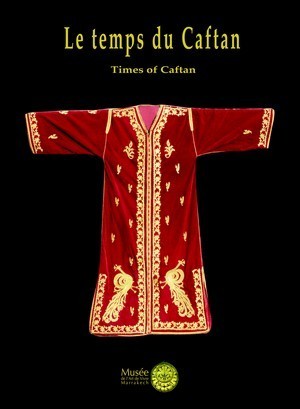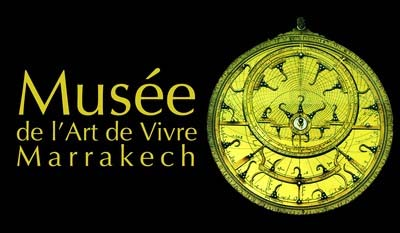Anglais
The caftan is the best known of all traditional costumes in Morocco. This urban garment is cut in fabrics chosen for the quality and nobility of their weaving such as taffeta, natural silks, cashmere, velvet and brocade, all woven by hand. The fabrics are then entrusted to embroiderers who use gold, silver and silk threads to create stylized plant-inspired patterns and arabesques on them. The master craftsmen, highly skilful in the art of passementerie, will put the finishing touches to the caftan, decorating it with braiding, buttons and loops before adding the silk or cotton lining. This is chosen in a complementary colour to the fabric or picks up one of the colours of the embroidery or passementerie. The lining of a caftan allows both concealing the reverse side of the embroidery and passementerie and giving it greater body.

Since it was introduced to Morocco in the 16th century, the caftan has been continually enriched by influences from the Orient, Turkey and Andalusia. The caftan is not a costume that has been crystallized in time but, on the contrary, is the reflection of its time and evolves with fashion. In Morocco, young designers, both men and women, continue to create caftans with modern and elegant lines, introducing new fabrics.
The caftan is evidence of the refinement of the cultures where it was born, in particular Baghdad, Damascus, Cordoba, Granada, Fez and Tetouan; several crafts and trades are associated in creating this sartorial art : from the weavers who make the fabrics and brocades in their workshops to the tailors who cut the caftans with the shape and size varying from one region to another and according to the period. The work of the embroiderers is followed by the craftsmen who, helped by their apprentices, put together the different parts of the caftan by hand using different types of passementerie. At every stage, agile hands vie in skill and expertise to give simple fabrics a story and a soul. Each caftan then embodies this story where each craftsman or craftswoman has given the garment its splendour. The caftan thus embodies an art of living.
For each age and each rite of passage (birth, circumcision, engagement, wedding…) a specific style of caftan was made.
Aware of the splendour and the place of the caftan in Moroccan culture, for its inaugural exhibition, the Museum of the Moroccan Art de Vivre in Marrakech has chosen to pay tribute to the women and men who, for centuries, have handed down the crafts involved in the art of dressing women, children and men, as the caftan was worn at all ages and by both sexes.
This exhibition hopes to help make the history and diversity of this costume better known and to pay homage to the skilled men and women who have been able to pass on an art of gracious living from one generation to another and that lives on thanks to young designers, whilst allowing the caftan to take its rightful place in the world of contemporary haute couture.
|
L'actualité des Musées
|
Galerie
|
2, Derb Chérif , Diour Saboun, Marrakech, Médina
+212 6 10408096
+212 6 10408096


